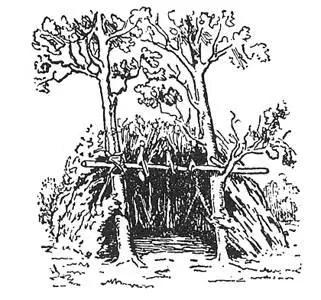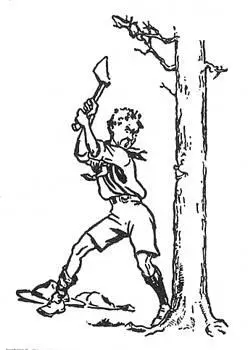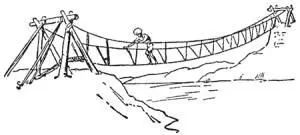Robert Robert - Scouting for Boys
Здесь есть возможность читать онлайн «Robert Robert - Scouting for Boys» весь текст электронной книги совершенно бесплатно (целиком полную версию без сокращений). В некоторых случаях можно слушать аудио, скачать через торрент в формате fb2 и присутствует краткое содержание. Жанр: Старинная литература, und. Описание произведения, (предисловие) а так же отзывы посетителей доступны на портале библиотеки ЛибКат.
- Название:Scouting for Boys
- Автор:
- Жанр:
- Год:неизвестен
- ISBN:нет данных
- Рейтинг книги:3 / 5. Голосов: 1
-
Избранное:Добавить в избранное
- Отзывы:
-
Ваша оценка:
- 60
- 1
- 2
- 3
- 4
- 5
Scouting for Boys: краткое содержание, описание и аннотация
Предлагаем к чтению аннотацию, описание, краткое содержание или предисловие (зависит от того, что написал сам автор книги «Scouting for Boys»). Если вы не нашли необходимую информацию о книге — напишите в комментариях, мы постараемся отыскать её.
Scouting for Boys — читать онлайн бесплатно полную книгу (весь текст) целиком
Ниже представлен текст книги, разбитый по страницам. Система сохранения места последней прочитанной страницы, позволяет с удобством читать онлайн бесплатно книгу «Scouting for Boys», без необходимости каждый раз заново искать на чём Вы остановились. Поставьте закладку, и сможете в любой момент перейти на страницу, на которой закончили чтение.
Интервал:
Закладка:
Another way to build a shelter hut is to lean a ridge-pole or backbone from the ground into the fork of a small tree about 5 ft. above the ground, the butt of the pole being 7 ft. to windward of the tree. Then put up a side pole leaning against this, and roof over in the same way as for a lean-
to.
Where you have no poles available you can do as the South African natives do—pile up a lot of brushwood, heather, etc., into a small wall made in semicircle to keep out the cold wind— and make your fire in the open part.
Zulus make their huts by planting a circle of long sticks upright in the ground. They then bend the tops towards the centre and tie them together. Next they weave whippy sticks horizontally in and out among the uprights until they have made a kind of circular bird-cage. This they cover with a straw mat, or thatch it, or weave straw in among the sticks. Sometimes a small hole is left at the top, to act as a chimney.
The Red Indians make their “teepee” by tying several long poles together in the form of a pyramid, and covering them with canvas or skins sewn together.
If your tent or hut is too hot in the sun, put blankets or more straw over the top. The thicker the roof, the cooler the tent is in summer. If the hut is too cold, make the bottom of the walls thicker, or build a small wall of sods about a foot high round the foot of the wall outside.
Never forget to dig a good drain all round your hut, so that if heavy rain comes in the night your floor will not get flooded from outside.
This type of shelter is called a “wab” by the natives of Somaliland.

Your Axe
A backwoodsman has to be pretty useful with his axe. To become a good axeman a fellow must know, first, how the thing ought to be done, and secondly, he must have lots of practice in doing it before he can be considered any good.
Only bad workmen complain of the tools—so before starting to work, be sure that your tool is a good one.
Your axe should be a “felling” axe, of which the head will weigh nearly three pounds. See that the handle, or “helve”, is perfectly straight and true in line with the head and the edge. To do this look along the helve with the edge of the head turned upwards. If the edge is not true to the helve, your cuts will go all astray.
Sharpening the Axe
Then see that your axe is sharp—really sharp, not merely with a good edge on it. A slightly blunt axe is no more good for cutting down a tree than a very blunt knife is for cutting a pencil. Learn how to sharpen your axe on a grindstone, while you are in civilisation, where grindstones can be found and where there are men to show you.
In India, when we went “pig sticking” (that is, hunting wild boar with spears), we found how very necessary it was to keep our spears as sharp as razors. Every time we killed a boar we sharpened up our spear-heads again, ready for the next fight. We could not carry grindstones about with us, but we carried a small, fine file, with which we were able to touch up the edge.
Many an old backwoodsman carries such a file with him to keep his axe keen. There is a saying with these men that “You may lend your last dollar to a friend, but never lend him your axe— unless you know that he is a good axeman and will not blunt it”.
Protect Your Axe
Only a fool will go banging about with an axe—hacking at trees, chopping at roots and branches on the ground, in this way destroying valuable trees and at the same time blunting the axe at every stroke on earth and stones. And when his arms tire, he will throw the axe down, leaving it lying around on the ground, where it may catch and cut the toe of someone moving about after dark.
When you want to leave your axe, strike straight down with it into a tree stump, and leave it sticking there till required again, or make a special “mask” for the blade of a piece of wood, or put it in its leather case.
Using the Axe
In using an axe, the tenderfoot generally tries to cover his bad aim by the extra strength of his blows. If an old hand is looking on, he is smiling to himself and thinking of the backache he got himself the first time that he did it.
Don’t try to put force into the blow, merely be careful about aiming it so that it falls exactly where you want it. The swing and weight of the axe will do the rest. Make the blows at a slant, not straight down.
A good axeman uses his axe equally well left-handed or right, It is all a matter of practice.
TOMMY THE TENDERFOOT No. 2 — TOMMY FELLS A TREE

Poor Tommy’s for gotten to sharpen his axe, So the tree only suffers a series of whacks.
Tree Felling
When you want to fell a tree for a useful purpose, get permission first.
Before starting to fell your tree, first clear away all branches which might interfere with the swing of your axe and therefore spoil your aim. Also clear away any brambles or undergrowth that might trip you at the critical moment. Make sure that onlookers are well away from you.
The way to fell a tree is first to cut a big chunk out on the side to which you want the tree to fall, and then to cut into the opposite side to fell it. Plan your work so that the tree will fall clear of other trees and not get hung up in their branches.
Begin your first notch, or “kerf”, as it is called, by chopping two marks, the upper one at a distance above the other equal to the thickness of the tree. Then cut alternately, first a horizontal cut at the lower mark, then a sideways, downward cut at the upper one, and jerk out the chunk between the two. Go on doing this till you get to the centre of the tree.
Now go to the opposite side of the tree and cut another notch here, only about three inches above the level of the lower mark of the first kerf.
Cut out chunks when you are at it—not a lot of little chips, which are signs to anyone coming there later that a tenderfoot has been at work. It is all a matter of aiming your stroke well.
Then, when your tree falls, look out for the butt. This often jumps back from the stump. Never stand directly behind it— many a tenderfoot has been killed that way. When the stem cracks and the tree begins to topple over, move forward in the direction of the fall, and at the same time
onwards, away from the butt.
Trimming and Logging
When the tree is down, it must be trimmed, that is, the boughs and branches must be cut off, leaving a clean trunk. This is done by working from the butt end of the trunk towards the top. Cut off each bough from below, as close to the trunk as possible.
The trunk is then cut into lengths. This is called “logging”. Cut from one side towards the middle, making the kerf half as wide as the tree is thick. Then turn the tree over and make a similar kerf from the other side, until the logs come apart.

In the Himalaya mountains, the natives make bridges of three ropes.
Bridge Building
As I told you before, my scouts in Ashanti, when also acting as pioneers, had to build nearly two hundred bridges. And they had to make them out of any kind of material that they could find on the spot. There are many ways of making bridges. Pioneer bridges are generally made by
Читать дальшеИнтервал:
Закладка:
Похожие книги на «Scouting for Boys»
Представляем Вашему вниманию похожие книги на «Scouting for Boys» списком для выбора. Мы отобрали схожую по названию и смыслу литературу в надежде предоставить читателям больше вариантов отыскать новые, интересные, ещё непрочитанные произведения.
Обсуждение, отзывы о книге «Scouting for Boys» и просто собственные мнения читателей. Оставьте ваши комментарии, напишите, что Вы думаете о произведении, его смысле или главных героях. Укажите что конкретно понравилось, а что нет, и почему Вы так считаете.

![Роберт Баден-Пауэлл - Искусство скаута-разведчика[Scouting for boys ; Искусство Разведки для мальчиков]](/books/70572/robert-baden-pauell-iskusstvo-skauta-thumb.webp)









